Is Lokopakaraya Misogynistic?
Lokopakaraya is a Sinhala religious classic written in the 18th century by a Buddhist monk named Ven. Ranasgalle Thero.
Considered one of the longest “Upadesha” poems, it ranks alongside other major advisory religious and literary texts in Sinhala literature such as Loveda Sangarawa, Subashithaya, and Sirith Maldama. This poetic genre flourished in Asian Pali and Sanskrit literature.
“Upadesha” means advice, teachings, or instructions in Sanskrit. The title Lokopakaraya combines “Loka” (world) and “Upakaraya” (benefit or guide), meaning “a guide to living in the world.” It contains valuable advice for everyday life, drawing heavily from Buddhist Jataka stories and folk tales and was once a primary resource in Sri Lanka’s early education system.
Lokopakaraya is undeniably a masterpiece, valued for centuries. Yet, this article seeks to question and re-examine its underlying misogyny—a perspective on women that warrants scrutiny in the 21st century.
The text contains 28 poems that reflect the author's views on the nature of women. He seems to manifest misogyny in multiple ways, including sexism, the belittling of women, and their objectification.
From a feminist perspective, this negative portrayal of women is troubling. It underscores prejudices that likely influenced the sexism still evident in contemporary Sri Lankan society.
What is Sexism?
The New Oxford American Dictionary defines sexism as “prejudice, stereotyping, or discrimination, typically against women, on the basis of sex.”
The Encyclopaedia Britannica further explains that “sexism in a society is most commonly directed against women and girls. It maintains patriarchy, or male domination, through the ideological and material practices of individuals, collectives, and institutions that oppress women and girls based on sex or gender.”
These texts, often authored by Buddhist monks who led celibate lives, have traditionally been seen as “sacred,” representing ultimate truths in philosophy. As a result, no one has questioned their sociological implications, despite their influence on gender attitudes.
One purpose of literature is to express truth artistically. But since there is no singular, fixed truth in reality or art, we must recognize that a text reflects one person’s opinion—not an eternal truth. Once a text is read, critically analyzed, and validated by generations of readers, its ideas can solidify within society, influencing daily practices for better or worse.
Applied to Lokopakaraya, this perspective highlights a central issue. It is a work written by a man, read primarily by men (as women had limited access to literature), and analyzed, critiqued, and validated by male literary tradition. This male-dominated narrative has contributed to the text’s inherent sexism.
Examples of Misogynistic Attitudes in Lokopakaraya
Poem 56
සග මොක් දෙකට යන මඟ
අකුලි මාවත නිරා යන
විස මුසු අමායුරු ලියෝ
මායම් පිරූ බදුනකි
Meaning: Women are like pots of poisonous magic potion, barriers to attaining Nirvana, or enlightenment.
Here, women are portrayed as obstacles, temptations that hinder men’s spiritual progress. The theme aligns with the notion that women should be avoided by men seeking ultimate “freedom,” as Yashodara and baby Rahula were seen as barriers to Siddhartha Gautama’s search for enlightenment. This ideology, or perhaps its misinterpretation, reflects Buddhism’s fundamentalist attitudes toward women, which have affected women’s status in Sri Lankan society.
In Sinhala, there is a popular saying that “Surawa (alcohol), Sooduwa (casino), Sthriya (woman)” are the three things one should avoid to lead a healthy life. Growing up, I also internalized the idea that being a woman was a barrier to achieving “great” things in life. For a woman seen as her own obstacle, Nirvana felt unattainable, whereas male peers seemed to reach it simply by “leaving their women.” This education perpetuates biases against women.
Another theme in Lokopakaraya is the notion of women’s infidelity. The poet stresses that women are naturally untrustworthy and promiscuous.
Poem 46
රකුසෙක් තම ලියක
තැබී කරඩුවක ලා කුස තුල
එහි තුළ වන් සිදුට
තම හිමිට දියුණුව කළා පෙම්
Meaning: A demon imprisoned his wife in a casket inside his stomach to protect her from other men, only to find her with another man inside his stomach.
Poem 60
ලියෝ බොරු සෙනෙහස
පාප තම හිමි නසත් සොරු ගෙන
කොටකුට කළ ලොබින්
ගලින් බෝ සත් හෙළූ ලිය මෙනි
Meaning: To commit adultery, women show false love and affection to their husbands, eventually killing them. This is like the woman who pushed the Bodhisattva off a cliff because she loved a short man.
The implication is that women need constant protection due to their “promiscuity,” yet there is no emphasis on male infidelity. These passages suggest that women, not men, lack marital fidelity and self-control.
Sri Lankan society appears patriarchal, though it superficially venerates the “virtuous” mother. Women are pressured to conform to a “sacred” standard throughout their lives, but their desires and identities remain marginalized.
Poem 63 objectifies women, comparing them to “Baduwa”—a commercial good. Ironically, this term is still used in colloquial Sinhala to refer to an attractive woman.
Poem 63
උරණ නොව හැම කල
යෙහෙන් රකිතත් පණ සෙ නිතියෙන්
බඩුවක් මෙන් විකිණි
පහස දෙත් කාට වත් අඟනෝ
Meaning: Even if you love and care for women like your life, they would still give pleasure to anyone, like a prostitute who sells her body.
The poet continues to devalue women by comparing them to animals such as cats, dogs, poisonous snakes, foxes, and crows.
Poem 67
දරු පෙම් ගුණ නුවණ
සමත් බැව් හැම කියති මළ කල
තම ලිය ගුණ ඇතත්
නොකිය වියතුනි මළත් උන්නත්
Meaning: When someone dies, people speak of his good deeds, wisdom, and service. But alive or dead, one should never praise his wife.
Poem 68
සිරිමත් කළත් ලිය
ලුහු දනටම ලොබ වඩත් මැයි
කිරෙන් බත් ලූවත්
සුනකයෝ කසලටම ලොබ වෙත්
Meaning: Even if you feed dogs luxury food like milk, they still prefer garbage. Likewise, women prefer associating with immoral villains.
Poem 53
සලෙලුන් දැක ලියන්
සැඟවෙනු නොවේ බලව විළියෙන්
බළලුන් ගොදුර තම
පැමිණෙන තෙක් වැන්න සැඟවෙනු.
Meaning: When women meet seducers, they are not shy; they are like cats waiting for prey.
These examples clearly demonstrate the author’s misogynistic perspective. They likely reflect societal attitudes toward women in ancient Sri Lanka, and their impact on Sri Lankan culture persists today.
While readers can further analyze and judge these poems, I leave you with these questions:
Should we separate literature from religious fundamentalism in our society?
Is woman still a threat to man? Is she still the “second sex”?
In the context of 21st-century Sri Lanka, should we re-evaluate and perhaps rewrite literary and religious texts like Lokopakaraya to promote gender equality?

 7 min
7 min

 7 min
7 min

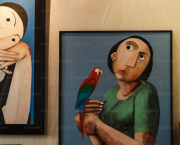
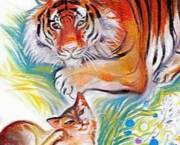


 10 min
10 min

 7 min
7 min


 4 min
4 min
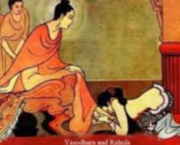
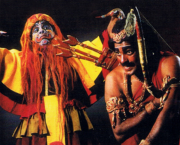
 30 min
30 min
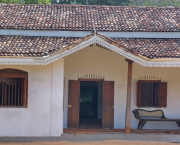


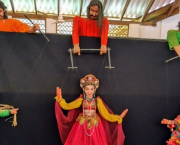
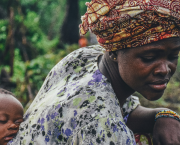


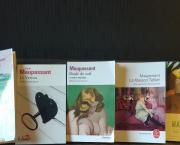

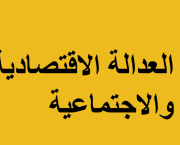



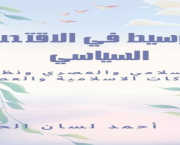


 1 min
1 min




 Du kannst deine Lieblingsautoren unterstützen
Du kannst deine Lieblingsautoren unterstützen

Jackie H vor einem Jahr
Wow ! What a food for thought 😯
What you describe here about misogyny in Buddhist Sri Lanka resonates with some equally misogynistic or more broadly sexist features in Western culture - because yes, there is an amount of misandry in Western female spiritual circles. It is no coincidence that the Lokopakaraya was written by a *monk* who considered *celibate* life as the ultimate way to spirituality - and considered therefore sexuality (and founding a family) a threat to his spiritual life. Yet founding a family, having children and a descent was seen as essential for the future (and survival) of the group and of humankind as such... there was always this tension between two opposite yet equally vital goals. All this is combined of course with the proverbial uncertainty about fatherhood... Not just a comment and not just an article but a whole book should be written about this (even if many already have been)...
Charitha Liyanage vor einem Jahr
Monks and priests were regarded as the supreme authorities of knowledge and the primary distributors of it. Their authority was rarely questioned, and as a result, the consequences of this dynamic are still felt today. Literature shape the way we think, male spiritual gurus hate women! If there is still negative image on women in general, it is exactly due to that.
Jackie H vor einem Jahr
I can even add as a Western woman that even when nuns - the female equivalent of monks - were also detainers and distributors of knowledge, they took far longer than monks to be acknowledged and recognized as such... Hildegard von Bingen and Teresa de Avila took centuries to be awarded the title of "Doctor of the Church". Yet there is a whole tradition of female spirituality in Christianity... which shows how powerfully male prejudice shaped society almost universally and often skewed things in disadvantage of women.
Surf Xi vor einem Jahr
Thanks for the demonstration!
I’m not trying to answer the last three questions since my brain refuses to answer closed- ended questions ;
yet, they give it something to grind 🙏
Charitha Liyanage vor einem Jahr
Yes , we have no answers, but we are just aware now.